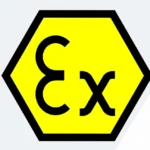
Fire Safety in ATEX Industrial Areas
December 1, 2023
Understanding the Working Principles of Flame Detectors in Fire Safety Systems
December 1, 2023
Fire Safety in ATEX Industrial Areas
December 1, 2023
Understanding the Working Principles of Flame Detectors in Fire Safety Systems
December 1, 2023Technical Library
Navigating Fire Safety - Intumescent Coatings
Navigating Fire Safety: A Technical Guide to Intumescent Steel Coatings Product Selection
Introduction:
In the realm of structural fire protection, intumescent steel coatings play a pivotal role in enhancing the fire resistance of steel structures. These coatings undergo a transformative process when exposed to heat, swelling and forming a protective insulating layer that mitigates the effects of fire. This technical article provides insights into the key considerations and factors involved in selecting intumescent steel coatings, exploring the principles, standards, and product characteristics crucial for optimal fire safety in various applications.
Understanding Intumescent Steel Coatings:
1-Principles of Intumescence:
- Intumescent coatings are formulated with materials that expand when exposed to high temperatures.
- When subjected to fire, the coating undergoes a controlled expansion, forming a charred, insulating layer that protects the underlying steel from the effects of heat.
2-Key Components:
- Intumescent coatings typically comprise a combination of binders, hydrates, carbonific agents, and other additives.
- Each component plays a specific role in the intumescent process, contributing to the coating's ability to provide fire resistance.
Product Selection Criteria:
1-Fire Rating Requirements:
- The fire resistance requirements of a structure determine the necessary fire rating for the intumescent coating.
- Consider factors such as the duration of fire protection required and compliance with relevant standards, such as BS 476 and EN 13381.
2-Substrate and Application Conditions:
- The type and condition of the steel substrate, as well as the environmental conditions during application, influence product selection.
- Considerations include the presence of primers, surface preparation requirements, and the impact of ambient conditions on curing times.
3-Thickness and Application Method:
- The required thickness of the intumescent coating is influenced by the desired fire rating and the specific product's performance characteristics.
- Application methods, such as spraying, brushing, or rolling, impact the achievable thickness and uniformity of the coating.
4-Aesthetic Considerations:
- Intumescent coatings are available in various finishes, including clear or translucent options.
- Aesthetic considerations may be important, especially in applications where the coating is visible, such as architectural or decorative elements.
Standards and Certification:
1-Testing Standards:
- Compliance with testing standards, such as EN 13381 and ASTM E119, is crucial for evaluating the performance of intumescent steel coatings.
- These standards assess factors like fire resistance, adhesion, and durability under simulated fire conditions.
2-Third-Party Certification:
- Third-party certification from recognized bodies provides an additional layer of assurance regarding the performance of intumescent coatings.
- Look for certifications that validate compliance with relevant fire safety standards and product consistency.
Advancements and Innovation:
1-Research and Development:
- Ongoing research and development in the field of fire protection coatings lead to advancements in formulation and performance.
- Stay informed about industry trends, new technologies, and innovations that may impact product selection.
2-Environmental Considerations:
- Increasing emphasis on sustainability and environmental impact has led to the development of water-based and low-VOC (volatile organic compound) intumescent coatings.
- Consider the environmental implications and compliance with eco-friendly standards when selecting coatings.
Maintenance and Durability:
1-Durability in Challenging Environments:
- Consider the durability of intumescent coatings in challenging environments, such as coastal or industrial settings.
- High-performance coatings with corrosion resistance can enhance the longevity of the fire protection system.
2-Maintenance Requirements:
- Evaluate the maintenance requirements of the selected intumescent coating.
- Some coatings may require periodic inspection and touch-ups to ensure continued effectiveness over the structure's lifecycle.
Conclusion:
The selection of intumescent steel coatings is a critical aspect of structural fire protection, demanding careful consideration of fire rating requirements, substrate conditions, testing standards, and environmental factors. As advancements in material science and formulation continue, staying abreast of innovations and industry trends is vital for making informed choices that align with the specific needs of diverse applications. By adhering to established standards, considering product characteristics, and embracing innovation, engineers, architects, and specifiers can optimize fire safety in steel structures through judicious intumescent coating selection.
